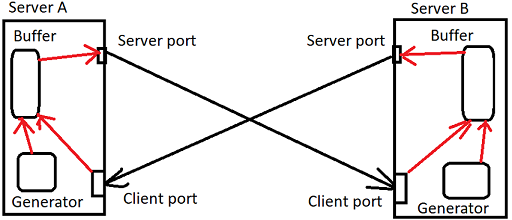Reference no: EM131197890
Lab: Grade Calculator
Purpose- In this lab, you will build an analog computer to calculate a student's final grade in a class, using a parallel voltage divider and a summing amplifier.
Part 1: Pre-lab
A student wants to build an analog computer to calculate her grade in her circuit's class. Ideally, she wants be able to calculate the final grade of any student in the class with this circuit. Unlike the design in last week's lab, we need to design a circuit with adjustable inputs and a single voltage source. This way, we could change any of the input grades (i.e., v1 through v5) and watch the final grade (i.e., vout) change in real-time. With this final goal in mind, design a circuit that meets the following criteria:
-Assume the following grade weighting for our student's circuits class:
- Homework: 15%
- Quizzes: 15%
- Exam I: 20%
- Exam 2: 20%
- Final Exam: 30%
Assume each input voltage (v1 through v5) is between zero and one and represents her average grades as follows:
- v1 = homework average
- v2 = quiz average
- v3 = Exam I score
- v4 = Exam 2 score
- v5 = Final Exam score
-The output, vout, is a positive voltage between zero and one and represents the final score in the class.
-You have one available voltage source, vin = 2 V.
You have the following available components:
- Any standard resistors provided in the lab
- Up to two μ741 op amps
- Up to five 10 kΩ potentiometers
You can use your summing amplifier design from last week's lab; however, you need to design a front-end that will give you multiple, adjustable node voltages. These adjustable node voltages should vary between zero and one volt and will be connected directly to your inputs v1 through v5. This will allow you to input any student's scores and see a final grade at the output.
Your analysis will be easier if you understand the concept of virtually parallel components. When a node voltage is zero but is not connected to ground, such as at an op amp terminal, that node is referred to as a virtual ground. If a pair of resistors share one node and are each connected to ground or virtual ground at the other end, they are considered virtually parallel and can be combined in parallel for the sake of analysis. (See Appendix A for more information.)
Show your design work in the space below and on the next page. Once your design is complete, draw your circuit in MultiSim. Choose any values you like for v1 through v5 and simulate your circuit. Print out your drawing to include with this lab, make sure that the input and output voltages are visible in your drawing, and be sure to include a title block.
Part 2: In the lab
Build the circuit you designed in the pre-lab. You should be able to see a change in vout when you vary each input potentiometer. When you think your circuit is working, put in some test cases for v1 through v5 (e.g., the values you chose when you simulated your MultiSim drawing) and verify that you are getting the correct vout.
Since last week, our student turned in two homework assignments and took a quiz. Her new averages are shown in Table 1. Calculate, theoretically, what grade she needs on her final exam to receive an \A" in the class. Show your work here and enter your calculated answer in the space below.
Now use your circuit to determine what grade she needs on her final exam to receive an "A" in the class. Fill in your measured answer in the space below.

Final exam score needed for an "A" in the class (theoretical calculation): ______________
Final exam score needed for an "A" in the class (measured from circuit): ______________
Demonstrate your working circuit to your TA. Your TA will give you a final exam grade to input into your circuit. Write that grade in the space below, and show your circuit's final grade answer below, also.
Final exam score from TA: ______________
Final grade in class (vout measured from circuit): ______________
TA Verification: ______________
Part 3: Post-lab questions
Answer the questions listed below. Make sure that your handwriting is legible! When you are finished, staple everything together and turn in this completed lab packet to your TA.
1. Which was easier to implement, buffer amplifiers (in Lab 8) or using the concept of virtually parallel resistors (this lab)? Why?
2. Which LED turned on when your circuit was hooked up to the TA's circuit?
3. What are your thoughts on this lab? Was it fun, interesting, boring? Any thoughts on how to improve it?
4. Now that you have completed all of the labs, would you recommend using these set of labs in the future? Any final comments or concerns?
Attachment:- Assignment.rar